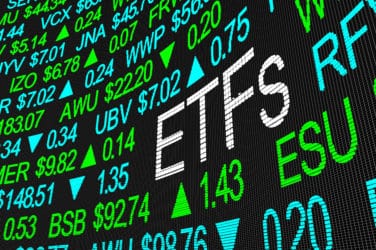
Euronext, the pan-European exchange operator, is creating a new block trading platform for equities as the ability to trade large sizes will become more critical under new regulations.
The exchange has formed a strategic partnership with AX Trading, a US fintech company and ECN, to launch a multi-lateral trading facility for large-in-scale orders in European equities in the middle of this year. The service will cover small-cap stocks as well as blue-chips.
MiFID II, the European Union regulations which come into force at the beginning of next year, places double caps on the volume of equities trading in dark pools. However, firms can apply for waivers which allow large in scale trades, above a specified minimum size, to be exempt from both the volume caps and from pre-trade transparency requirements.

Danielle Mensah, Euronext
Danielle Mensah, head of cash markets at Euronext, told Markets Media that institutional demand for executing in the dark and for large trades is as high as ever and there has been a shift to electronic block trading.
She said: “We devised a new model which is different from all the other venues as it is a purely dark continuous book which combines conditional and firm orders through pro-active messaging. This overcomes the issue that it is rare for both sides of a block to be active in the market in the same time.”
Mensah continued that banks, or asset managers via their brokers, can send proactive indications of interest to look for liquidity while retaining control over both the contents of the message and its distribution to address concerns over possible information leakage. She said: “There is an automated IOI service together with sophisticated analytics for best execution. Ax Trading had the software and expertise that we could leverage.”
George O’Krepkie, chairman and chief executive of AX Trading, told Markets Media that the firm’s actionable IOI technology launched in the US in the first quarter of last year. Brokers can send live, firm orders to AXioi, which triggers actionable IOIs. The platform uses real-time market data to update the order and deliver electronic IOIs to buy-side firms selected by the broker, who can then interact with that liquidity electronically via their order or execution management systems.
O’Krepkie said: “We have 120 buy-side using the service in the US. Seven months ago we started looking at Europe and realised the buy side wanted a trusted counterparty, such as an exchange, for large blocks and we contacted Euronext.”
Brad Bailey, research director, securities and Investments group at consultancy Celent, told Markets Media that the partnership was a “win-win” for the two firms .
He said: “A large number of venues can co-exist as investors want choice in how they trade in terms of liquidity and size. The tool chest for a typical advanced buy-side firm will range from trading natural blocks to using algorithms.”
Bailey continued that MiFID II provides incentives for trading larger blocks but even in the US, the volume of block trading is increasing.
Patrick Young said in his Exchange Invest newsletter: “A block trading facility on the cusp of MiFID II is a great idea, even with the competition from LIS (Bats-Bids) and the original incumbent, Liquidnet as well as a potentially resurgent ITG. A fascinating offer in a fascinating space which is also true of the collateral and liquidity risk management services.”
Rival pan-European exchange Bats Europe licensed technology from Bids Trading, the largest block trading ATS by volume in the US, to launch Bats LIS (Large in Scale) last December. Dave Howson, chief operating officer at Bats Europe, told Markets Media this month that average trade size has grown to more than €1m since sell-side firms were given direct access to Bats LIS. Asset managers have been able to access Bats LIS through a broker but the service is being extended this month so asset managers can have direct access.
In 2015 Bats Europe also launched a periodic auction to help trade in larger sizes. Trading in the periodic auction at Bats Europe is in a lit book and subject to pre-trade and post-trade transparency, so the MiFID II dark volume caps do not apply. Auctions last a randomized time of between 100 milliseconds and five minutes, depending on liquidity of the individual stock.
Last year Plato Partnership, the non-profit group, agreed a cooperation agreement with Turquoise, the MTF majority-owned by the London Stock Exchange Group, to bring together the buy side, sell side and a trading venue and increase efficiencies in anonymous European equity block trading. Turquoise Plato Uncross has random intra-day auctions to make it harder for the cross to be targeted by aggressive trading strategies. Turquoise Plato Block Discovery facilitates trading in larger block orders by matching block indications which are sent to Uncross once they are firm.
ITG’s institutional block crossing network, Posit Alert set a trading record in Europe last month. In its fourth quarter results the agency broker said total average daily value traded through Posit Alert in Europe increased 60% compared to the final three months of 2015.
Rob Boardman, European chief executive of ITG, told Markets Media this month: “European equities volumes in dark pools have been rising and will become a premium after MiFID II. We have been taking preparatory steps for the dark volume caps by finding larger orders so they can trade under the large in scale waiver.”
Rebecca Healey, head of EMEA market structure and strategy at institutional block trading platform Liquidnet, interviewed 53 European-based global heads of dealing last year. She found that nearly half of the buyside respondents plan to increase their proportion of large-in-scale activity post-MiFID II.
“The challenge for the buy side is understanding how the demise of broker dark pools as we know them will impact the future dark landscape – particularly given that three-quarters of respondents stated they had either received insufficient or no information from brokers as to how their dark pools will evolve into Systematic Internalisers post MiFID II,” added Healey.
She predicted that dark trading is more likely to change into alternative forms of dark activity rather than automatically switch to lit venues, following in the footsteps of similar regulatory attempts in both Canada and Italy.
Euronext also said in a statement today it is launching Euronext Chequers to provide risk analytics, inventory management and a collateral transformation platform for commodities, fixed income and equities. The initial phase of Euronext Chequers will see the start of participant on-boarding next month.
“This will be using electronic storage certificates, to enhance the settlement and physical delivery of Euronext’s futures contracts,” said the statement. “Euronext Chequers electronic silo-based warrants will then be introduced later in Q2 2017, giving clear, transferable title to goods stored in silos.”






